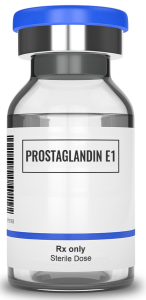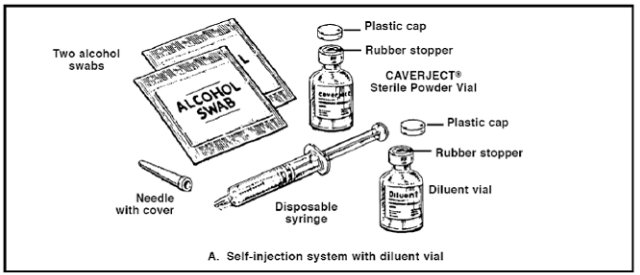Anomalous Material
Content based on Extensive ResearchAlprostadil Mechanism Of Action
Monday , 15, August 2022 Information Comments Off on Alprostadil Mechanism Of ActionAlprostadil is sold as a urethral suppository in the U.S., as well as an injectable formulation. Alprostadil comes in powder to mix with a liquid provided in the packaging and injected into your penis, and as urethral suppositories (pellets that are placed into your penile orifice). Injections of alprostadil can induce erections as it increases blood flow into the penis.
If you take too much alprostadil injection, your erection will last too long and will not go away when it is supposed to. Sickle Cell Trait — The chances that problems will arise can increase, and you should use Alprostadil Injection sparingly with these patients. Prapism, a history of – Patients with these conditions are at increased risk for priapism (erections lasting longer than 6 hours) when using alprostadil. Failed treatment with alprostadil alone or in the Bi-Mix (papaverine + phentolamine) regimen, or who stopped treatment because of excessive penile pain.
Alprostadil for Sale
 Alprostadil injections are used by themselves or in combination with medical tests to help diagnose erectile dysfunction, which can result from nerve or blood vessel problems in the penis. Alprostadil (prostaglandin E1) is produced internally to relax the smooth muscles of your blood vessels and to produce vasodilation. Alprostadil for sale causes vasodilation through its direct action on the vascular smooth muscles and ductus arteriosus (DA), either by blocking or by reversing the functional closing of the DA which occurs soon after birth. Alprostadil is produced endogenously and causes vasodilation by means of a direct effect on vascular and ductus arteriosus (DA) smooth muscle, preventing or reversing the functional closure of the DA that occurs shortly after birth. In turn, activation of adenylate cyclase results in accumulation of 35-cAMP (cyclic adenosine monophosphate), responsible for pharmacologic effects of alprostadil, including smooth muscle relaxation, vasodilation (increased peripheral blood flow; helps with erectile dysfunction) and bronchodilation, as well as inhibition of platelet aggregation.
Alprostadil injections are used by themselves or in combination with medical tests to help diagnose erectile dysfunction, which can result from nerve or blood vessel problems in the penis. Alprostadil (prostaglandin E1) is produced internally to relax the smooth muscles of your blood vessels and to produce vasodilation. Alprostadil for sale causes vasodilation through its direct action on the vascular smooth muscles and ductus arteriosus (DA), either by blocking or by reversing the functional closing of the DA which occurs soon after birth. Alprostadil is produced endogenously and causes vasodilation by means of a direct effect on vascular and ductus arteriosus (DA) smooth muscle, preventing or reversing the functional closure of the DA that occurs shortly after birth. In turn, activation of adenylate cyclase results in accumulation of 35-cAMP (cyclic adenosine monophosphate), responsible for pharmacologic effects of alprostadil, including smooth muscle relaxation, vasodilation (increased peripheral blood flow; helps with erectile dysfunction) and bronchodilation, as well as inhibition of platelet aggregation.
Alprostadil binds as an agonist to prostaglandin receptors, e.g., EP2 which in turns activates adenylate cyclase leading to accumulation of 35-cAMP (cyclic adenosine monophosphate) which is responsible for the pharmacologic effects of Alprostadil including smooth muscle relaxation, causing vasodilation (increasing peripheral blood flow ; helps in erectile dysfunction) and bronchodilation, and inhibits platelet aggregation. It increases intracellular levels of cyclic adenosine monophosphate (cAMP) through modulation of adenylate cyclase. When administered as an injection into the intracavernosal canal or as an intraurethral suppository, alprostadil acts locally by relaxing trabecular smooth muscle in the corpora cavernosa and cavernosal arteries. Administration of intracavernous alprostadil is helpful due to its vasodilating properties, which acts by relaxing the corpora cavernosa smooth muscle, thus increasing the cavernous artery diameter, leading to erection. Caverject (alprostadil) is a prostaglandin that has wide-ranging pharmacological actions, including vasodilation and inhibition of platelet aggregation.

Alprostadil (prostaglandin E1) is one of the families of naturally occurring acidic lipids that have various pharmacological effects. Prostaglandin E1 (PGE1), also known as alprostadil, is a naturally occurring prostaglandin used as a medicine. Alprostadil is also used to keep the patent ductus arteriosus open in newborns.
Preventive alprostadil use can lower risks for renal injury (specifically, contrast-induced nephropathy) in people who undergo cardiac angiography or percutaneous coronary intervention. After starting alprostadil at home, your healthcare provider can slowly increase or reduce the dosage. Monitor respiratory status during the entire treatment, and use the pediatric injectable version of alprostadil when there is immediate access to ventilatory help.